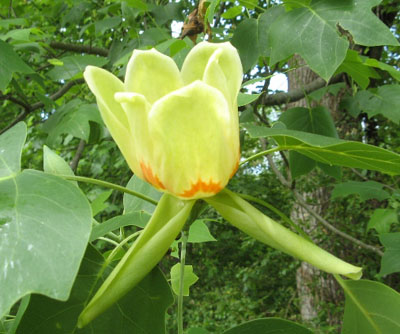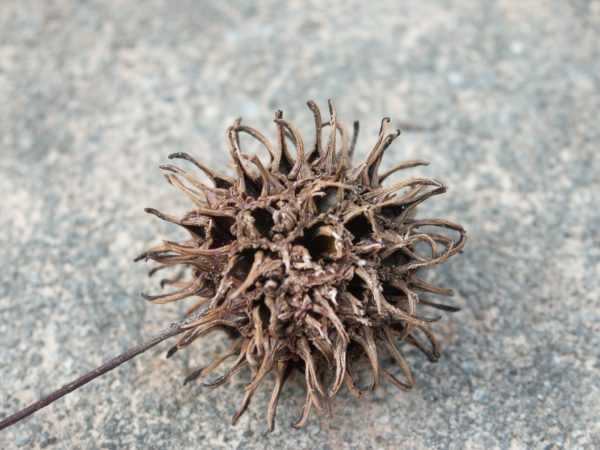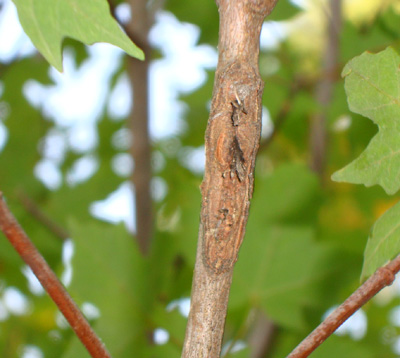Roundup (glyphosate) – Damage to Trees
Q: What do you know about recent findings that Roundup harms trees when sprayed under them to kill weeds? Is there a safe way to use Roundup near trees?
A: I found the article you read and reviewed it.
Use Glyphosate Properly to Protect Woody Plants
I sent an email to the writers asking the following questions:
1. You state that it is not glyphosate but the surfactant that causes damage. Yet you use “glyphosate” generically throughout the article to indicate the chemical culprit. Which is it?
2. Is the damage caused by application to the bark of woody plants or by soil application nearby?
3. Is there more than one surfactant chemical involved? Or is a single surfactant used by all manufacturers?
4. Do you have published research on this phenomenon?
5. What is Monsanto’s response to your work?
I also sent the article to Dr. Mark Czarnota, weed scientist at the University of Georgia. His reply speaks volumes:
“I reviewed the article by Dr. Mathers, and some points I agree with and many I do not.
Glyphosate is a great product that inhibits the EPSP (enolpyruvyl shikimate-3-phosphate) sythase, which leads to the build up of shikimate, and the inability of the plant to produce 3 aromatic amino acids: tryptophane, phenylalanine, and tyrosine (this pathway is not in any animals, and is the reason for the high degree of safety of this product).
There are many formulations on the market (pounds glyphosate / gallon), and many different adjuvant / glyphosate blends. Most of the adjuvants are proprietary to all but EPA registration folk.
Glyphosate, as most people are aware (or have experienced first hand), can cause many injury problems caused by drift, incidental contact, misapplication, and otherwise pure stupidity. Damage from subleathel doses that I often see are stunting, bud blast, and chlorosis (but can include many others).
At the cellular level many other types of damage might be occurring, but have not been proven through scientific methodology and include bark splitting, loss of cold hardiness, and many others. I am not aware of any published research in these areas (from peer reviewed journals). Much of what I see in Georgia is damage to foliage (stunting), and most of this occurs from continual applications of glyphosate sprays around thin skin trees where spray contacts bark (and often suckers). With continual exposure to these sprays, glyphosate concentrations begin to build up in the plant, and at some point (varies with plant species) you will begin to see sublethal dose symptomolgy.
As for bark splitting, I have not had a grower or agent contact me about this being a problem. However, on the RoundupPro label (and most other glyphosate T/O labels) there is a statement about using a shield to prevent the contact of spray or spray drift on desirable foliage or bark. Shouldn’t some common sense should be employed here? I would not recommend that a grower allow a glyphosate spray to contact green bark or thin skinned trees of a small diameters (<2" DBH) and particularly not multiple applications. You are just asking for trouble!
Also, what I’m seeing is that many growers are turning away from preemergent herbicides, that could limit or eliminate much of these glyphosate applications that have the potential to cause problems (particularly on small nursery stock). The price of glyphosate may cause many growers to consider the use of pre herbicides once again?
Dr. Mathers mentioned the use of glyphosate as a pre-herbicide? Hopefully this is a mis-quote? Any Weed Scientist would know that glyphosate could not be used in this capacity. Glyphosate is quickly bound to the soil and unavailable to act as a pre-herbicide.
She also mentions using glyphosate sprays without an adjuvant. Glyphosate formulations without an adjuvant additive (i.e. surfactant) are extremely poor on most terrestrial applications. Most of these formulations are reserved for aquatic and forestry applications (many good reasons for this).
If bark split is a major problem in Dr. Mathers’ state, she should design some experiments to address this problem, and confirm that glyphosate or the adjuvants are causing this type of damage. Then she could determine if there are any alternatives that could be employed to help the growers control weeds without damaging their nursery stock.
This is what myself, Dr. Mathers, or any extension specialist in our field are hired to do: have some hard core evidence to back up what you are saying to the public.”


















